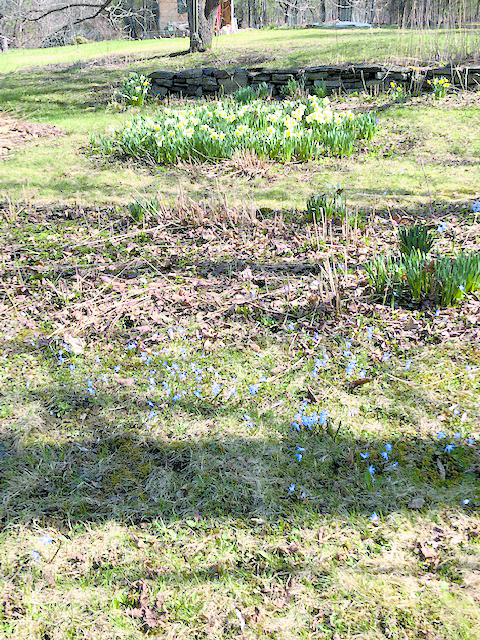Earth Notes: Let’s recognize ‘Too Much of a Good Thing’

By Cynthia Hoeh Stancioff
Guest Columnist
As the brief, dreary, gray winter days begin to lengthen and yield to spring’s brightening, we frost-weary Mainers rejoice at the first promises of warmth and sun. This change and the preceding darkness are part of the thrill of living in the north. We experience, and pride ourselves in surviving through, all the seasons. I actually enjoyed winter and skiing, but that’s a fast-fading memory now, easily pushed aside as daffodils unfold out of deep green foliage, lawns turn green overnight, and tiny leaves create a pastel haze on the reawakening trees.
I start thinking about morel mushrooms, and whether I should once more make a concerted effort to find them here in Maine, or should I again do something even sillier like drive to Ohio (where they are far more numerous)?
But thinking of mushrooms gets me onto the worrisome subject of weather patterns that most people, most of the time, are blissfully receptive to: namely, sunny, warm, non-rainy stretches of any length — the longer the better. Well, I’m here to tell you we don’t all feel this way.
For the last four or five years, the wild mushroom hunting here in southern Franklin County has been consistently grim. It could easily be attributable to a lack of spring rains, as well as some of those years also being dry all summer. Granted, almost every year there has been a brief rainy spell at some point during the five-month mushroom season, followed by a flush of fungi, such that everyone is struck by the “unusual” plethora of mushrooms, and they’re left with the impression that it’s been a banner year. But if they’d been searching vainly since early summer for all the types of fungi that should have been there but weren’t, they would have a more appropriate response — “Phew, finally — at least we had one month with a few good edibles.”
In my neighborhood, there have been almost no mushrooms on the forest floor in recent years — certainly last year there were fewer than I have ever seen in 35 years of hunting. The tree trunk species were fairly successful, but the ones that do not grow on wood were quite missing. The exception was a certain type that grows on lawns — which are usually watered.
As the earth has been warming, weather patterns have shifted in ways that are unpredictable and difficult to characterize, partly because there are new things happening that we don’t have enough experience with to understand, we don’t know what to focus on, and we need new vocabulary. It’s been established that the northeast is warming faster than other parts of the country, and we are becoming more drought-prone than historically, more flash-flood-prone, more likely to experience weather bursts, and that we have less snow than we used to.
I can’t help but cringe when, in an early April warm spell that took us from 32 to 70 degrees within a few days, accompanied by cloudless skies, the most common observation I hear is “beautiful weather!” Two weeks later, one rainy day and one drizzly day, then back to “beautiful.” No need to close dirt roads in our town this year for the first time in memory. Have we lost the oft-scorned “mud season?” I tell you, it’s not actually good news.
Hotter average and high temperatures no doubt lead to a greater need by plants for moisture from the soil. Who knows whether higher levels of CO2 in the atmosphere, leading to faster growth in plants, has reached the level of depleting the moisture content of the forest floor? There’s room for all sorts of paranoia here, when you are dealing with all the unknowns of fungi in general — surprisingly little is known about the ecology of wild mushrooms.
If you want something to study in college, and something to make discoveries in, the ecology of fungi is a real frontier. But you better hurry, we’re racing the clock, if recent trends in fungal fortune hold up!
So, next time there is an unusual stretch of warmth and sun such as the one we are having as I write in mid-April, go ahead and be happy. But also think about the big picture, and take a minute to write to your Members of Congress: Please remind them that climate change is a priority for you — and for all the other life forms depending on us.

